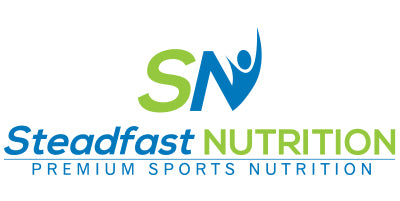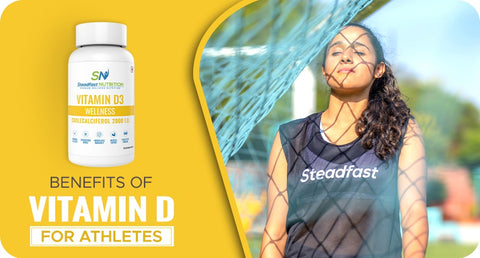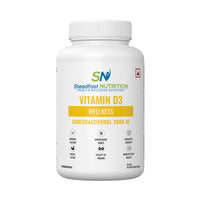Abstract
Vitamin D deficiency is known to be more common in athletes. The traditional method for measuring vitamin D levels gives us a general indicator of body stores. Although, there are variations in its evaluation as values of 25(OH)D do not correlate with the amount of ‘bioavailable’ vitamins to the cells. Vitamin D should be considered as a hormone and influences between 5% and 10% of our total genome. It has been recorded that deficiency has many different harmful effects on not only bones and muscles, but also on other areas, including immunity, respiratory and neurological activities. More attention should be given to the ability of phenomenal vitamin D whose levels help boost athletic performance. Buy Vitamin D.
Introduction
In the past extra attention has been paid to the global problem of hypovitaminosis D. Over one billion people are estimated to be deficient. A journal of sports science and medicine and orthopaedic surgery has stated that the result of hypovitaminosis D on athletes during their training and performance, and with regard to its avoidance of injury and recovery from treatments, including surgery, has been explored further.
Many studies on hypovitaminosis D have been undertaken not only on the young, fit and healthy but also on other populations. They indicate potential associations rather than causation. It has been found that there are many injuries and illnesses which are multifactorial. Hypovitaminosis D can be one of the major contributors. One should study what the term ‘athlete’ means. As we all know different sports vary in their cardiovascular, respiratory, musculoskeletal and neurological requirements in the body. The elite athletes many times display their anatomy, physiology and genetic advantages. Although, everyone is at risk. (1)
Many sports have been explored with high numbers of athletes found to have hypovitaminosis D. Main reasons for deficiency are athletes having dark skin tones, participation in outdoor sports and living in higher latitudes are well-known risk factors. The consequences of hypovitaminosis D in preoperative orthopaedic patients reflects the general population. Possibility factors include trauma, sports-related surgery, excessive sunscreen use and surgery during winter months. It has been seen more commonly in shoulder, foot and ankle surgical patients(2)
One of the findings also showed an apparent benefit to VO2 max and 30-second sprint performance, in another study it has been found that a reduction in levels of muscle damage after a punishing 30-minute downhill running test. (3)
Conclusion
To conclude, we can say that having low vitamin D levels has been linked with lower athletic performance, but that doesn’t mean it is the only cause. One of the reasons could be that the people with low levels tend to spend less time being active outdoors during the sunlight (which is the primary natural source of vitamin D). As we all know that Vitamin D is a fat-soluble vitamin and gets stored in form of body fat only, but people with more fat are known to have lower levels of vitamin D circulating in the bloodstream of their body— so it may be their extra weight and not the lack of vitamin D, that hampers their performance. In another part of the study, subjects got vitamin D supplements additionally through a daily pill or sunlight consumption three times a week. Both forms of supplementation were found to have positive results, approximately doubling levels of 25[OH]D from about 40 to 80 nmol/L. (4)
One can also go for the Steadfast vitamin D capsules as it is a well-known supplement brand. It is available in soft gelatine capsules made from an animal source. Each capsule contains 2000 IU of cholecalciferol. It also contains Butylated hydroxyanisole, a synthetic form of Vitamin E, that acts as an antioxidant and increases the shelf-life of the product. Along with the above-mentioned component it also contains lecithin and glycerine as an emulsifier and stabilizing agent. The product should be kept in a cool, dry, and dark place to increase its shelf-life. It can be taken by any individual from athletes to common populations as per the direction of the health care professional.
References
1. Todd J.J., Pourshahidi L.K., McSorley E.M., Madigan S.M., Magee P.J. Vitamin D: Recent advances and implications for athletes. Sport Med. 2015;45:213–229. DOI: 10.1007/s40279-014-0266-7.
2. Zhang R., Naughton D.P. Vitamin D in health and disease: Current perspectives. Nutr. J. 2010;9:65–71. DOI: 10.1186/1475-2891-9-65
3. Holick M.F., Binkley N.C., Bischoff-Ferrari H.A., Gordon C.M., Hanley D.A., Heaney R.P., Murad M.H., Weaver C.M. Guidelines for preventing and treating vitamin D deficiency and insufficiency revisited. J. Clin. Endocrinol. Metab. 2012;97:1153–1158.
4. Owens D.J., Allison R., Close G.L. Vitamin D and the Athlete: Current Perspective and new challenges. Sports Med. 2018;48(Suppl. 1): S3–S16. DOI: 10.1007/s40279-017-0841-9.


